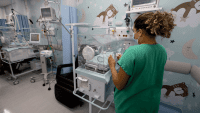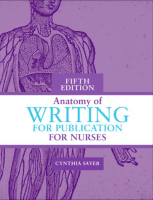Nurses today are indeed challenged to do no harm to
the sick as well as the healthy—just in the course of
daily life and work.
Our hospitals use toxic chemicals to treat patients,
to clean, to disinfect, to sterilize, to anesthetize, and to
kill pests, mold and weeds. We also use toxic substances
to assist with laboratory practices.
Products we use often travel thousands of miles for
consumers to buy, polluting the air with their travel
exhaust by train, air, boat, and truck. As a nation, we
emit large amounts of greenhouse gases, adding to the
catastrophic effects of global climate change.
We have pesticide-laden produce, chemically lined
canned goods, and synthetic hormone-“enhanced”
dairy and meat products on grocery shelves. Children’s
toys may contain lead, arsenic, cadmium, and
mercury. Our water may contain organic and inorganic
chemicals, disinfectants, and disinfectant byproducts.
Certain healthcare devices contain mercury and
phthalates.
It sometimes seems overwhelming to tackle such a
long list of problems, but ANA members have a resource
available to them that can make a real difference
in how they approach environmental health:
ANA’s Principles of Environmental Health for Nursing
Practice with Implementation Strategies (ANA’s EH
Principles). Published in 2007, the text is available in
booklet form at www.nursesbooks.org/Main-Menu
/Specialties/Staffing-Workplace/ANAs-Principles-of-
Environmental-Health-for-Nursing-Practice-with-
Implementation-Strategies-.aspx.
ANA’s EH Principles
were developed to guide nurses
in linking the environment with human health, with
the aim of improving both, and to provide guidance
to nurses concerned with environmental health issues.
The publication also is appropriate for nurses interested
in pursuing solutions and outlines safer nursing
practices and strategies for implementing them.
The text discusses environmental health topics, such
as climate change, environmental justice, and the precautionary
principle; reviews relevant standards, resolutions,
and regulations; and identifies organizations and
initiatives that support environmental health issues.
The work also stresses the importance of advocacy
and highlights the need to incorporate environmental
health in nursing education and curricula.
ANA urges nurses to take to heart ANA’s Principles
of Environmental Health for Nursing Practice as outlined
in the text:
- Knowledge of environmental health concepts is essential
to nursing practice. - The precautionary principle guides nurses in their
practice to use products and practices that do not
harm human health or the environment and to take
preventive action in the face of uncertainty. - Nurses have a right to work in an environment that
is safe and healthy. - Healthy environments are sustained through multidisciplinary
collaboration. - Choice of materials, products, technology, and practices
in the environment that impact nursing practice
are based on the best evidence available. - Approaches to promoting a healthy environment reflect
a respect for the diverse values, beliefs, cultures,
and circumstances of patients and their families. - Nurses participate in assessing the quality of the environment
in which they practice and live. - Nurses, other healthcare workers, patients, and communities
have the right to know relevant and timely
information about the potentially harmful products,
chemicals, pollutants, and hazards to which they are
exposed. - Nurses participate in research of best practices that
promote a safe and healthy environment. - Nurses must be supported in advocating for and implementing
environmental health principles in nursing
practice.
To use ANA’s EH Principles in nursing practice, read
through each principle and select at least one to work
on at a time. Bring the selected principle to work and
also use it at home. Recycle something at home you’ve
never considered before, like your child’s empty juice
boxes or junk mail. Join or start a “green team” at
work. Educate your state representative on an environmental
issue.
The important thing is to begin using ANA’s EH
Principles now and to make a difference. In the words
of Florence Nightingale, “So never lose an opportunity
of urging a practical beginning, however small, for it is
wonderful how often in such matters the mustard-seed
germinates and roots itself.”
Holly Carpenter is a senior staff specialist for the Center for Occupational
and Environmental Health at ANA.

















